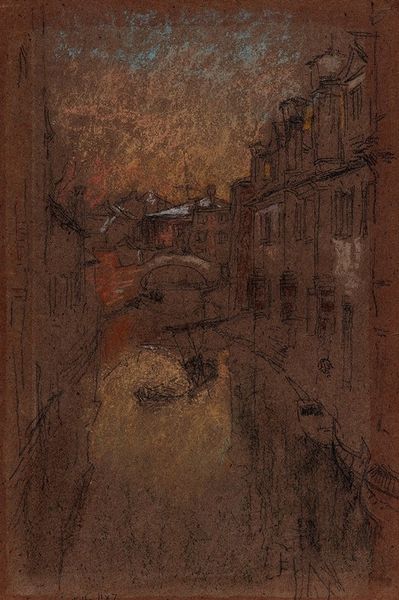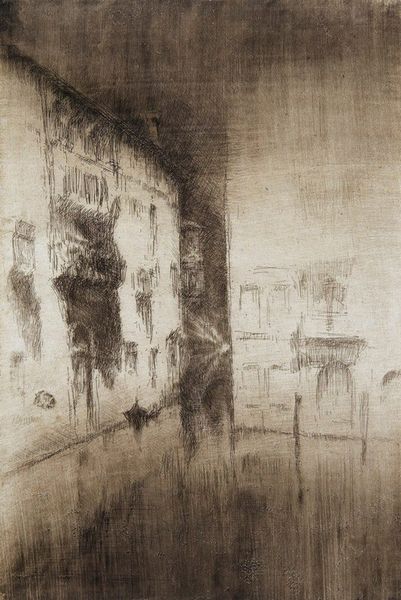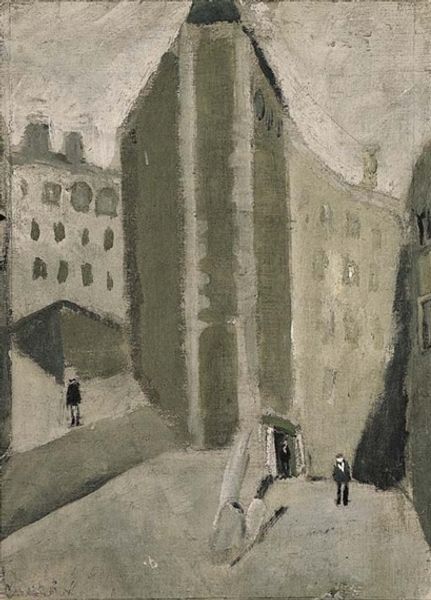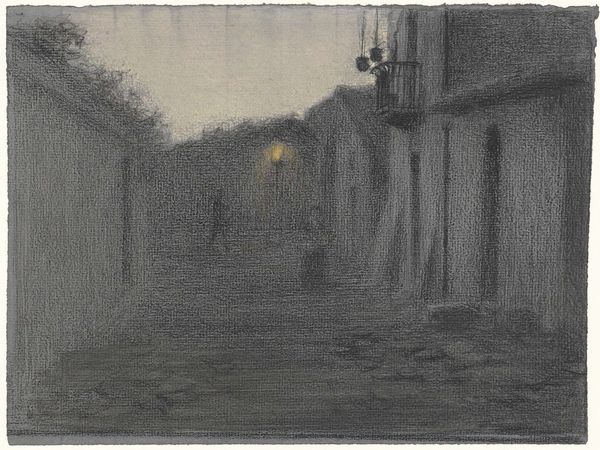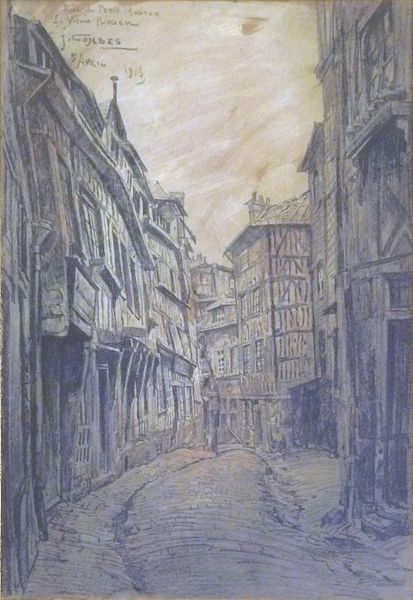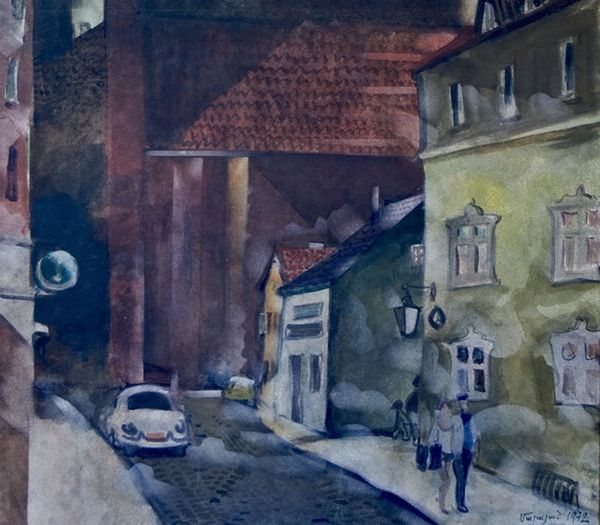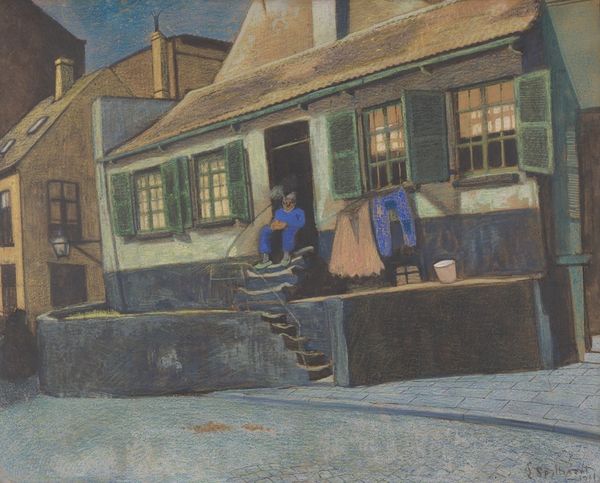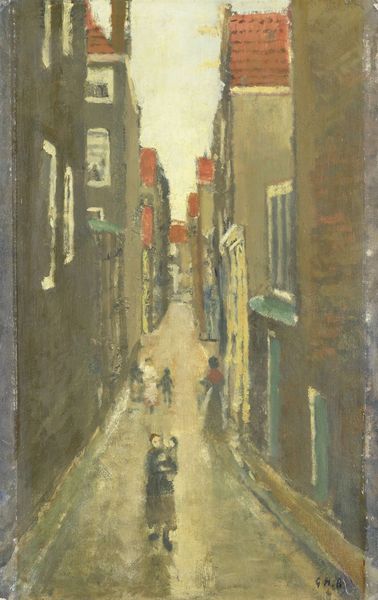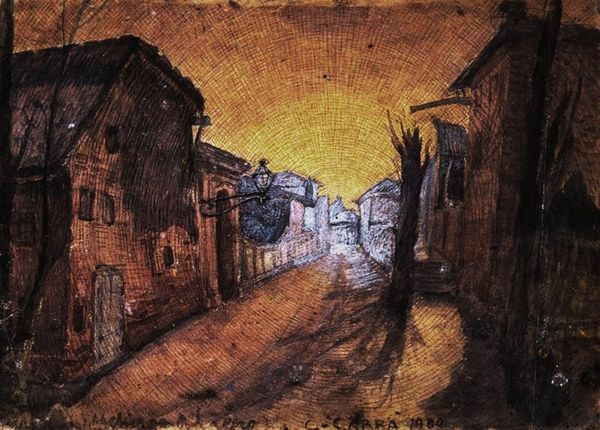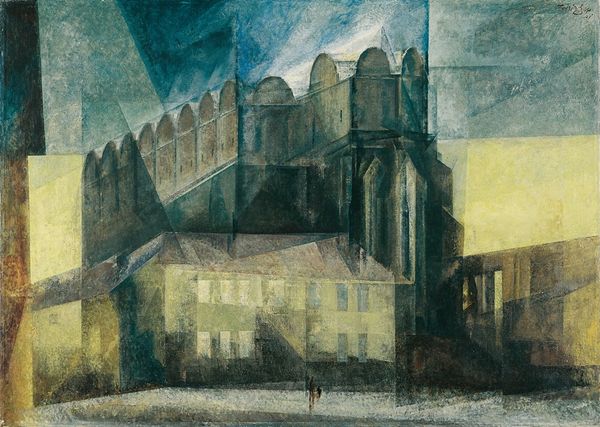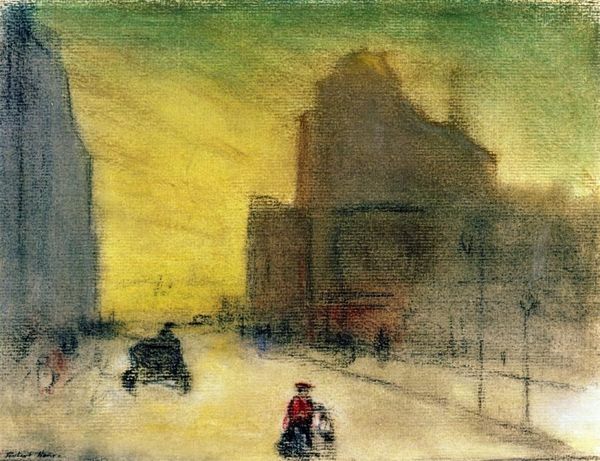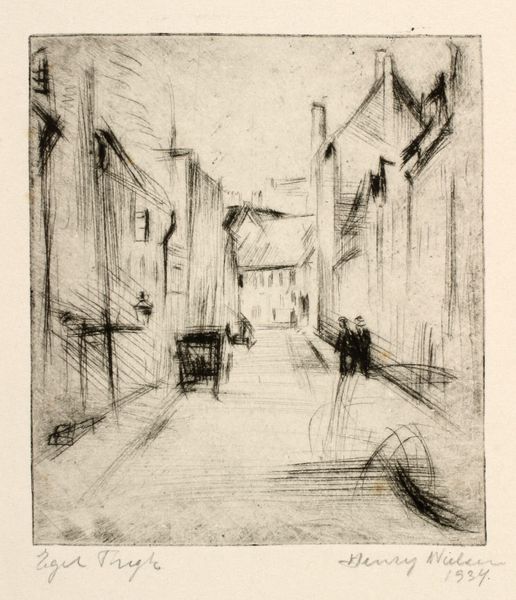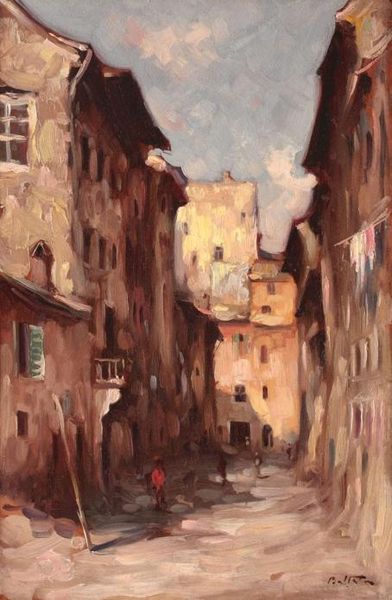
drawing, charcoal, pastel
#
portrait
#
drawing
#
charcoal drawing
#
figuration
#
oil painting
#
symbolism
#
cityscape
#
charcoal
#
pastel
#
street
Copyright: Public domain US
Curator: Dobuzhinsky’s "Street in Munich," created around 1901 with charcoal and pastel, immediately strikes me with its somber mood. The hazy atmosphere, almost like a dream, softens the rigid architectural lines. Editor: I agree. The use of muted tones adds to that almost oppressive atmosphere, but I think the figure in the foreground is key to interpreting the scene, suggesting an alienation, a solitary presence against the backdrop of urban life. Curator: Indeed. The solitary figure, hunched and almost disappearing into the shadows, reminds me of Symbolist themes – the individual dwarfed by the modern city. Look how the architecture, while realistically rendered, also seems to loom, pressing in on the figure. Are we meant to read the city as inherently oppressive, or perhaps offering protection? Editor: Well, context is crucial here. Early 20th century Munich was a hotbed of artistic experimentation. This work perhaps speaks to the broader anxieties regarding industrialization and the changing social landscape that impacted the individual, their identity and position in society. I can see hints of Symbolism in the muted palette, the hazy outlines blurring reality and emotion. Curator: Notice the composition too; how Dobuzhinsky uses the converging lines of the street to lead the eye deeper into the gloom. I think that serves to heighten the sense of unease. The architectural details aren't clearly defined. It's almost a stage set for a psychological drama. Editor: Absolutely. Considering the period and the city of Munich itself, "Street in Munich" offers not just a picture, but a layered social commentary, about the evolving and somewhat isolating reality of city life in modern times. Curator: It also taps into our subconscious understanding of cities. What lingers in cultural memory regarding that transitional time of rapid urbanization. Editor: And while Munich is physically specific, these motifs, this loneliness in urban space, has echoed throughout the twentieth and twenty-first centuries, making this seemingly small charcoal and pastel all the more impactful today.
Comments
No comments
Be the first to comment and join the conversation on the ultimate creative platform.
